I’m replacing my flooring in my house. 704 square feet of old ceramic tile in the foyer, hallway, dining room, powder room, kitchen, utility room, kitchen eating area. We’re removing the old ceramic floor and plywood underlayment. We’re replacing with new underlayment and Belmondo Porcelain tile…mostly 20×20 with some deco’s in the dining room.
2 different tile guys want to do 2 different things:
Underlayment: plywood or cement board? which is better? The old ceramic tile floor is has plywood underlayment. There are some areas with cracked/missing grout, but not bad for 20 years or so.
Grout: cementacious or epoxy? We don’t like cleaning grout (who does?) and have selected a dark grout color for that reason. Expoxy grout is thousands of dollars more for the job. Is it worth it?
Thanks!
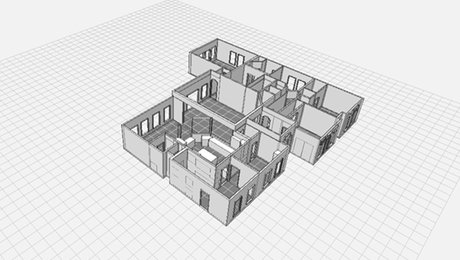
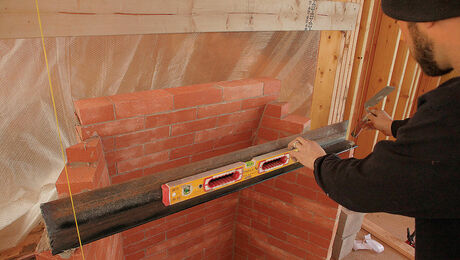
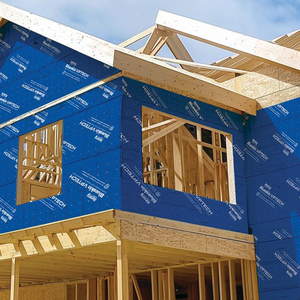
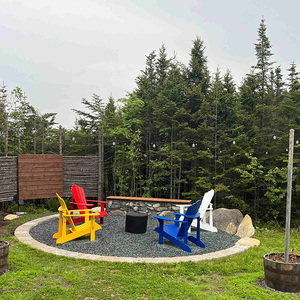

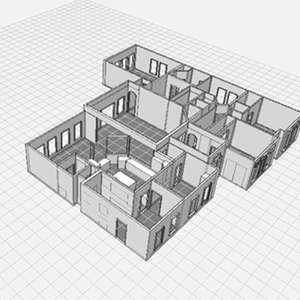













Replies
My personal prefference (from experience) is to do it all in plywood. You want to shoot for a minimum of 1 1/8 thickness. Glue it down with tile tile glue or better yet yellow wood glue and screw the #### out of it. 70-80 screws per sheet.
You should also check on your floor joist size, spacing and spans before moving ahead.
I believe the john bridge forum may have tables somewhere addressing joist requirements.
As for the epoxy..........there are a couple of guys here that claim to like it. I used it once years ago and never again. I understand that it has improved in a general way making install easier.
Look into Mapie grouts. Hard, strong and nearl impervious when properly sealed.
Eric
[email protected]
Bobgio,
The epoxy grout is definitely not worth it in a home. Commercial kitchen or slaughterhouse, maybe, but not a home.
The question of "best" underlayment depends on what you are trying to achieve. Plywood done properly, as Eric describes, will add significant stiffness, which is a good thing. Cement board units (CBU's) do not add significant stiffness. Tile jobs over framed floors often fail due to deflection of the substrate, so this is very important.
The advantages of cement board are that it is easy to bond to, it is not going to swell if it gets wet, and it won't support combustion. In most areas of a home, the advantages of plywood are more compelling than the advantages of CBU.
Tile correctly laid over stiff exterior plywood with modified thinset is so well bonded that getting it up destroys both the tile and the plywood.
Bill
how thick is the plywood beneath the plywood underlayment you are removing ?
and is it tongue and groove plywood ?
carpenter in transition
Tim..
The subfloor is 3/4" tongue and groove plywood. It's pretty solid. 40 year old home, a few creaky spots here and there, but pretty good over all. We'll fix the creaky spots before replacing the underlayment.
Also, a correction, the underlayment will be "fiberock" here's a linke to it:
http://www.usg.com/navigate.do?resource=/USG_Marketing_Content/usg.com/web_files/products/prod_details/FIBEROCK_Brand_Aqua-Tough_Fiber-Reinforced_Gypsum_Underlayment.htmThanks
bob
Edited 3/21/2008 3:43 pm ET by bobgio
3/4" ply subflooring alone is insufficient for laying tile, and Fiberock adds no structural integrity.
You should aim for the 1 1/8" understructure (combined subfloor and underlayment).....which means add minimum 1/2" to the 3/4" subfloor, then you can add a CBU (or not). If the CBU will add too much height, tile directly to the 1/2" or 3/4" underlayment, using a modified thinset (such as Flexi-bond).
Geoff
Hey guys, I am doing something similar, only my substrate is 3/4 t&g ply on tapered sleepers in full contact to concrete slab, hence no flex at all. I also plan on using a heat mat to insure comfort. It's in a bath and a laundry. I assume I need to prevent moisture to the plywood, but I don't want to build any more height than absolutely needed. What do you suggest? Going to Menards this afternoon, but it's 65 miles and I don't want to have to make more than one trip. I guess my thinking was also that i need to uncouple the tile from the ply to prevent any lateral movement issues as well, am I on the right track?
Ditra for you, my son.
Welcome to the Taunton University of Knowledge FHB Campus at Breaktime. where ... Excellence is its own reward!
Hey Piffin,What can you tell me about Ditra? My guy has suggested it. The subfloor is 3/4 tongue and groove plywood. The joists are 2x9 on 16" centers. The longest span is 15'. He wants to use it without another underlayment. Just ditra over the subfloor. He says it meets all the requirements for stiffness.
I'm concerned about the stiffness. Does Ditra add stiffness? Wouldn't plywood underlayment be stiffer?
The ditra is a decoupling membrane. It would not add stiffness. I mentioned it for the other guy chasing his rabbit down the side trail.The cement board adds very little is stiffness too. For large 20x20 tiles, I think you need more ply first, then if the cement board would make it too thick, maybe the ditra over the ply.The ply is what adds strength. the Cement board gives you a base that moves relatively the same as the tile with temperature and moisture differences. Tle directly on ply has a chance of loosing bond when the ply experiences shifts in size due to expansion with changes in humidity. That would be less of a concern in a house with good climate control.
Welcome to the Taunton University of Knowledge FHB Campus at Breaktime. where ... Excellence is its own reward!
"It would not add stiffness. '
maybe not ... but it does cut down on the ply thickness needed.
semantics or voodoo ...
but ditra does add "stiffness".
or something ... strength?
dunno.
but the ditra people will tell ya that ditra over 3/4 ply is as good as backer over 1 1/4 ply in most cases.
me ... I'd rather have the lumber. But I have used the ditra company line as a fall back when it was the only good option.
Jeff
Buck Construction
Artistry In Carpentry
Pittsburgh Pa
VooDoo is a great way to explain the Ditra magic
Welcome to the Taunton University of Knowledge FHB Campus at Breaktime. where ... Excellence is its own reward!
yup ...
goes against what I think I was taught ...
but lotsa hands on experience tells me they know what of they speak.
first "test" was still the best.
used it in a basement ... a real big, wide, ugly control joint ran right where the new bath with huge porcelain tile was to go.
only thing I paid attention to was not packing the joint with thinset ... thinking it's mushroom up if it closed. So I just troweled tight to each edge.
that job is going on 5 yrs ago now ... customer still give my name /number out and some of the guys that worked with me run into him a coupla times a year.
so far zero issues.
house had been dried in only a year earlier ... so pretty fresh construction.
those tiles were around 20.5 inches and fragile as hell.
Jeff Buck Construction
Artistry In Carpentry
Pittsburgh Pa
For 16" joist spacing the TCA allows plywood 19/32 subfloor and 15/32" (residential) or 19/32" (light commercial) and then tile (F150-03).And for use with CBU/Fiber Cement Underlayment 19/32" plywood subfloor and CBU/FCU underlayment. (F144-03)And with Fiber REinformced Gypsum Panel 19/32 subfloor (F170-03)And USG's installation instructions for Fiberock say the same thing..
.
A-holes. Hey every group has to have one. And I have been elected to be the one. I should make that my tagline.
3/4 plywood is not sufficient for tile. That's probably why you have cracked grout on the old tile floor. Grout shouldn't crack unless the substrate is not stiff enough or has otherwise moved such as from expansion/contraction or water swelling.
Remember, tile and grout don't flex much -- they crack.
Epoxy grout is great in a bathroom or kitchen if the installer is experienced. For the rest of the house use two applications of a high-quality grout sealer.
Billy
Apples and oranges. Lots of tile has been layed on plywood and done fine for years, but check with johnbridge.com and you'll find the standard of care is tile over CBU. The cement board is not intended to add stiffness to the flooring system. It is intended to be a good surface for adhesion for thinset and tile and although it is not waterproof ( i.e. water will go thru it) it is waterproof ( i.e. it will not deteriorate when wet ).
At the aforementioned site there is a chart that tells you deflection for your joist span and spacing. That's the place to start.
To achieve a water impervious system without adding height, check out the Ditra system.
Last question. No, unless you're raising hogs in your house.
Use cement board and for grout, Laticrete SpectraLok Pro - http://www.laticrete.com/Architects/Products/StainResistantGroutsEpoxyGrouts/tabid/125/Default.aspx - it offers the stain proofness and strength of epoxy with ease of application. All the tile in our house has it and you can't stain it with anything.
Be aware that 20" x 20" is a large tile and that makes for a more challenging installation. You could also consider installing the tile 'running bond' instead of 'grid'.
Jeff
Just did a room in my own home with that 20 x 20 tile. I found it very problematic in that they are VERY hard to level with adjacent tiles. One thing in their favour is that you can literally jump on them trying to get them level. Even with jumping on them I still have them not level. I tried taking some thinset out and in others putting extra under but It really didn't work. It was like laying old fashioned patio stones Very tippy.
Because the edges of the tile were not chamfered I found them harder to grout and add that to some tippy tiles...............I don't think I'll do them for a customer unless I fully explain the problems.
After saying all that, my wife loves the big tiles.roger
Edited 4/2/2008 9:29 am ET by roger g
Yup. What you are describing is called 'lippage'
Jeff
How did you do yours? Any tricks?roger
It's 13 x 13 and a very good tile man did it with Laticrete SpectraLok Pro grout.
Interestingly, he cements and staples down the CBUs with long ss staples
Jeff
Edited 4/2/2008 9:35 am ET by Jeff_Clarke
I've got several tiling books and nowhere does it mention big 20 x 20 tiles. Until I actually laid them I couldn't foresee the problems and definitely wasn't expecting them. I'm seeing more and more of these monster tiles being sold so it is probably the "flavour of the day".
Just as small 1 inch tiles are flexible and follow contours, the bigger the tiles are, the more the reverse is true.roger
That's right.
That's why forums such as this and http://www.johnbridge.com are invaluable.
Jeff
YTou have that right!The largest I ever laid were 17x17.
I was not happy with my results, but the customer was delighted.It is a pretty special skill to do anything over 12x12 IMO
Welcome to the Taunton University of Knowledge FHB Campus at Breaktime. where ... Excellence is its own reward!
If your joists check out with the deflecto meter add 1/2" underlayment ply(glued and screwed) and Ditra. I'm not a fan of tiling directly to plywood.
Jim
The awful thing is that beauty is mysterious as well as terrible. God and the devil are fighting there, and the battlefield is the heart of man.
- Fyodor Dostoyevski
Either or.
I prefer cement board. I glue it down with thin set & shoot it down with roofers. If the sub floor is the old diagonally nailed t&g, I make sure the boards are sufficiently nailed to the joists, then I screw down half inch underlayment (some guys use 3/8), hitting the joists with 2" deck screws, then I glue down my cement board. I also do that if it's going to be extra heavy duty traffic.
Cement board when glued down with a notched trowel will not flex at all. It also grabs the tile better. I've seen many a tile come loose from plywood.
Make sure the framing is sufficient, and add bridging to it if you need to.
I have laid tile over tile.
Your tile sounds suspect though, as if it never had the proper base. So, I'd probably lift your tile, and then add a dry pack mud base consisting of metal lathe and 3/4" minimum concrete base which was the only way it was done before cement board got started on the market.
The advantages are plenty. It's a very substantial mud base that increase the stiffness of the floor in a substantial way. It spreads the weight of a person walking over a much greater distance and you don't get the individual flex between joists. You are trying to achieve that with the extra layers of plywood. The mud base does this perfectly.
The biggest advantage is that you get to level the ups and downs in the wood structure. We all know that some joists are slightly elevated, some are slightly lower and the resulting plane resembles the ripples on a lake. Lippage occurs as a result of these imperfections in the substrate. A dry pack mud base is very easy to flatten and very easy to apply. If I can do it (I've done several large and small installations) anyone can do it.
I use 3/4 or 7/8" screedpoles. I then find me a good straight screed and just cut the dry pack material level with the screeds. A quick troweling over and everything is hunkydory.
The huge advantage in this particular situation is that you intend to lift and replace your original underlayment, which to me is the big job. I'd easily have the mud pack done before you could get the old stuff off the joists and the nails cleaned up. I'd have a perfectly flat, very substantial substrate and you'd be pulling nails and trying to figure out how to get the plywood back under your partitions and cabinets.
My only question here would be felt. Would I lay the mud over felt or eliminate the felt. I'd probably lay the felt first, then lathe, then mud.
Bob's next test date: 12/10/07
Ditto Eric to the T. And the Mapie products are 2nd to none. Use their Modified Thinset which is made for Good on Wood. I also keep a mister with me and soak (wet the plywood as I move along with the tileing. This trick keeps the plywood from sucking the moisture out of the thinset and you get the proper cureing.